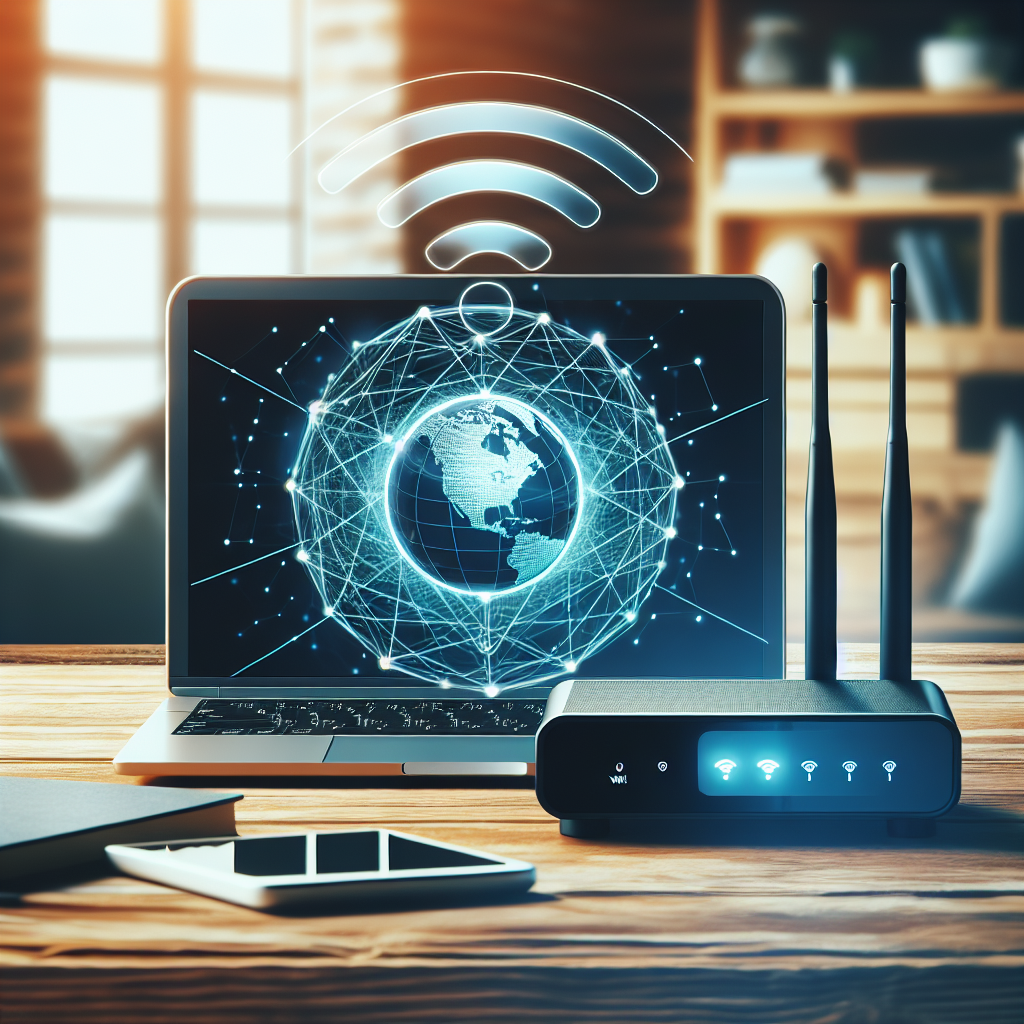Introduction
In today’s world, having a reliable internet connection and a functional Wi-Fi network is a necessity for both personal and professional use. This article will guide you through the process of connecting to the internet and setting up a Wi-Fi network in a few simple steps. Whether you’re a beginner or looking to refresh your knowledge, this guide will provide all the information you need.
Understanding the Basics
Before setting up a Wi-Fi network, it is important to understand the main components that make up the network.
Key Components
- Modem: A device that modulates and demodulates signals for data transmission over a telephone line, cable system, or satellite connection.
- Router: A device that forwards data packets between computer networks, creating an overlay of local area networks (LAN) and wide area networks (WAN).
- Internet Service Provider (ISP): A company that provides internet access to customers.
- Devices: Computers, smartphones, tablets, and other gadgets that connect to the internet via Wi-Fi.
Connection Types
Depending on your location and the available infrastructure, you may have access to different types of internet connections:
| Connection Type | Description |
|---|---|
| DSL | Utilizes telephone lines |
| Cable | Uses cable television lines |
| Fiber Optic | Offers high-speed internet through fiber-optic cables |
| Satellite | Internet via satellite dish, useful for rural areas |
| Mobile | Internet through mobile networks, such as 4G or 5G |
Step-by-Step Guide to Connecting to the Internet
1. Choosing Your Internet Service Provider (ISP)
The first step is selecting an ISP that fits your requirements and budget. Consider factors like speed, data cap limits, and customer service. It may be helpful to check online reviews and compare plans before making a decision.
2. Installing the Modem
- Once you have chosen an ISP, they will likely provide you with a modem. Follow the instructions provided by the ISP to set up the modem. Usually, you need to connect it to a power source and a telephone outlet or cable outlet.
3. Connecting the Router
- Next, connect the modem to your router using an Ethernet cable. Plug one end of the cable into the modem and the other end into the router’s WAN (Wide Area Network) port.
- Plug in the router to a power source and turn it on. Wait until the LED lights on the router indicate a stable connection.
4. Setting Up the Wi-Fi Network
- Open a web browser on your computer and type in the IP address of your router (usually found on the router’s label, e.g., 192.168.1.1).
- Login using the default username and password. These credentials are typically ‘admin’ and ‘password’ unless otherwise specified by the manufacturer.
- Navigate to the wireless settings and set up a Network Name (SSID) and Password. Choose a strong password to keep your network secure.
- Save the settings and restart your router if necessary.
5. Connecting Devices
- Now, turn on the Wi-Fi on your devices (computer, smartphone, tablet). Look for your Network Name (SSID) in the available networks list.
- Click on your Network Name and enter the password you set earlier.
- Once connected, test the internet connection by navigating to a website or using an online application.
Troubleshooting Common Issues
Slow Internet Speed
- Restart your modem and router to refresh the connection.
- Ensure no other devices are hogging bandwidth by doing data-intensive tasks like streaming or downloading large files.
- Move your router to a central location in your home for better coverage.
- Check if your ISP is experiencing outages or scheduled maintenance.
Wi-Fi Not Connecting
- Double-check the Network Name (SSID) and Password.
- Ensure your device’s Wi-Fi is turned on.
- Restart your device and try connecting again.
- If the problem persists, contact your ISP for further assistance.
Intermittent Connection
- Look for physical obstructions or interference from other electronic devices.
- Update your router’s firmware to the latest version.
- Switch to a different Wi-Fi channel through your router settings.
Conclusion
Setting up a Wi-Fi network and connecting to the internet may seem daunting at first, but following these steps can make the process straightforward and manageable. By selecting a reliable ISP, correctly installing your modem and router, setting up a secure Wi-Fi network, and troubleshooting common issues, you’ll ensure a seamless and fast internet experience.




